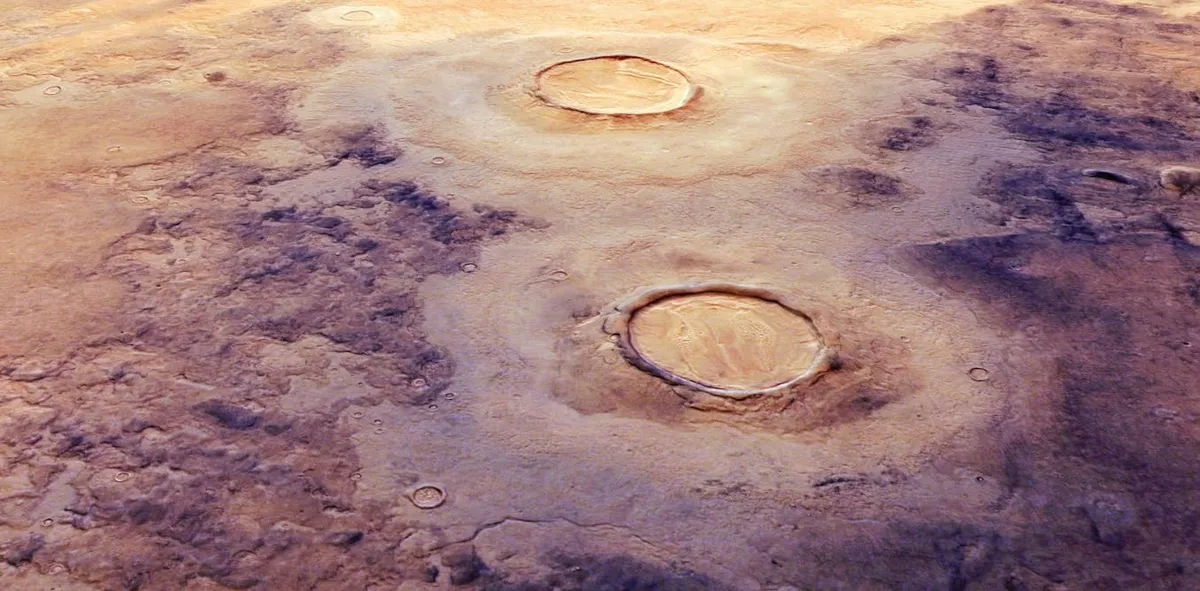
In the 1970s, images from the NASA Mariner 9 orbiter revealed water-sculpted surfaces on Mars, resolving the once-controversial question of whether water ever rippled over the red planet. Since then, a wealth of evidence has emerged, underscoring that water once played a significant role on our planetary neighbor.
For instance, Martian meteorites provide evidence of water dating back 4.5 billion years. In recent times, impact craters have revealed the presence of ice beneath the surface, suggesting the existence of water even today. These findings have fueled discussions about when water appeared on Mars, its quantity, and duration. A particularly intriguing question remains: were there ever oceans on Mars?
A recent study published in PNAS has reignited interest in this topic. Led by Jianhui Li from Guangzhou University in China, a team of Chinese and American scientists utilized data from the China National Space Administration’s Mars rover, Zhurong. This data provided an unprecedented glimpse into rocks buried near a proposed shoreline billions of years old, revealing potential beach deposits from an ancient Martian ocean.
Rovers exploring Mars investigate various aspects of the planet, including its geology, soil, and atmosphere, always in search of evidence of water on Mars. Water is a crucial factor in determining if Mars ever supported life. Sedimentary rocks, in particular, are a focus due to their potential to contain evidence of water—and by extension, life.
For example, the NASA Perseverance rover is currently exploring a delta deposit, a triangular region often found where rivers flow into larger bodies of water. Notable examples on Earth include the Mississippi delta in the United States and the Nile delta in Egypt. The delta being explored by the Perseverance rover is located within the Jezero impact crater, believed to be the site of an ancient lake.
The Zhurong rover, named after a mythical god of fire, was launched by the Chinese National Space Administration in 2020 and was active on Mars from 2021 to 2022. It landed within Utopia Planitia, the largest impact basin on Mars, spanning roughly 3,300 km in diameter. Zhurong focused on an area near ridges described as paleoshorelines, which extend for thousands of kilometers across Mars. These paleoshorelines are thought to be remnants of a global ocean that once encircled the northern third of Mars.
To determine if the rocks in Utopia Planitia were deposited by an ocean, Zhurong collected data along a 1.3 km transect at the basin's margin. This transect was oriented perpendicular to the paleoshoreline to understand the rock types and their story. The rover employed ground penetrating radar to probe up to 100 meters below the surface, revealing many characteristics of the buried rocks, including their orientation.
The rocks imaged along the transect contained numerous reflective layers visible by ground penetrating radar down to at least 30 meters. All layers dipped shallowly into the basin, away from the paleoshoreline, mirroring how sediments are deposited into oceans on Earth. The radar also measured the rocks' response to an electrical field, indicating they are more likely sedimentary rather than volcanic flows.
The study compared the data gathered by Zhurong from Utopia Planitia with ground penetrating radar data for different sedimentary environments on Earth. The results were clear—the rocks imaged by Zhurong match coastal sediments deposited along the margin of an ocean.
The Noachian period of Martian history, from 4.1 to 3.7 billion years ago, is often associated with a wet Mars, supported by orbital images of valley networks and mineral maps indicating surface water. However, evidence for surface water during the Hesperian period (3.7 to 3 billion years ago) is less abundant. While stunning orbital images of large outflow channels in Hesperian landforms, including Kasei Valles, suggest catastrophic releases of groundwater, they do not indicate standing water.
The Zhurong rover's findings of coastal deposits formed in an ocean may indicate that surface water on Mars was stable longer than previously recognized, possibly lasting into the Late Hesperian period. This could mean that habitable environments, around an ocean, extended to more recent times.